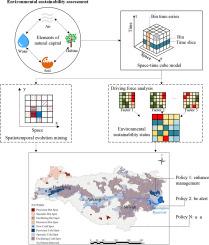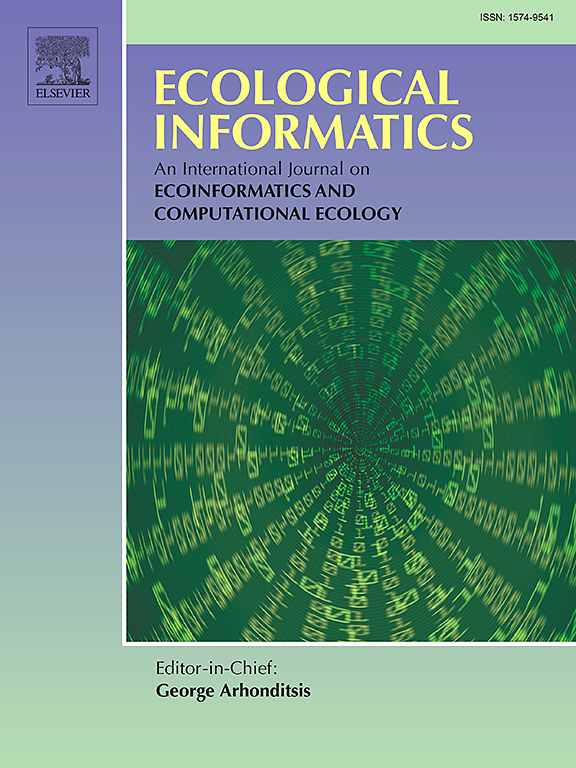用时空立方体阐述环境可持续性动态
IF 5.8
2区 环境科学与生态学
Q1 ECOLOGY
引用次数: 0
摘要
从概念上讲,环境可持续性涉及在考虑当前和未来发展的同时保持关键的环境功能。然而,现有的环境可持续性表述方法主要是从稳定状态推导而来,空间明确性极低。此外,某些事件对环境的影响可能会表现出滞后性,尤其是在盆地中。在此,我们提出了一个利用时空立方体来表达环境可持续性的框架。该立方体可以直观显示环境随时间的演变,识别空间中的热点和冷点,同时通过空间回归分析确定潜在的影响因素。与传统方法不同,时空立方体不仅包含空间维度,还包含时间维度。我们将这一框架应用于中国汉江上游流域,使用遥感生态指数(RSEI)作为环境可持续性指标。它使我们能够清晰地描绘出该流域从 1990 年到 2020 年的时空生态轨迹。我们的研究结果表明,气候变化(以气温和降水量变化为代表)和人类活动(以夜间光照为代表)是推动该流域 2000 年至 2020 年环境可持续性变化的主要因素。因此,我们提出的时空整合框架被证明是阐明环境可持续性的有效工具。本文章由计算机程序翻译,如有差异,请以英文原文为准。

Articulating environmental sustainability dynamics with space-time cube
Conceptually, environmental sustainability involves maintaining crucial environmental functions while considering both present and future development. However, existing methods for expressing environmental sustainability are mainly derived from a steady state with minimal spatial explicitness. Furthermore, the environmental impact of certain events may exhibit a lag, particularly in basins. Here, we propose a framework that employs a space-time cube to articulate environmental sustainability. This cube can visualize the environment's evolution over time, identify hot and cold spots in space, and concurrently determine underlying influencing factors via spatial regression analysis. Unlike traditional methods, the space-time cube incorporates not only spatial dimensions but also temporal dimensions. We applied this framework to China's upper Han River basin, using the Remote Sensing Ecological Index (RSEI) as an indicator of environmental sustainability. It enabled us to chart the basin's ecological trajectory with spatial and temporal explicitness from 1990 to 2020. Our findings reveal that climate change (represented by temperature and precipitation changes) and human activities (represented by nighttime light) were the main factors driving changes in environmental sustainability from 2000 to 2020 in the basin. Therefore, our proposed spatial-temporal integration framework proves to be an efficient tool in articulating environmental sustainability.
求助全文
通过发布文献求助,成功后即可免费获取论文全文。
去求助
来源期刊

Ecological Informatics
环境科学-生态学
CiteScore
8.30
自引率
11.80%
发文量
346
审稿时长
46 days
期刊介绍:
The journal Ecological Informatics is devoted to the publication of high quality, peer-reviewed articles on all aspects of computational ecology, data science and biogeography. The scope of the journal takes into account the data-intensive nature of ecology, the growing capacity of information technology to access, harness and leverage complex data as well as the critical need for informing sustainable management in view of global environmental and climate change.
The nature of the journal is interdisciplinary at the crossover between ecology and informatics. It focuses on novel concepts and techniques for image- and genome-based monitoring and interpretation, sensor- and multimedia-based data acquisition, internet-based data archiving and sharing, data assimilation, modelling and prediction of ecological data.
 求助内容:
求助内容: 应助结果提醒方式:
应助结果提醒方式:


